The Danny Kavadlo Interview
Return to Health and Strength Conference 2016
Return to Health and Strength Conference 2016 Presenter Interviews
Q & A with Dragon Door Author, Danny Kavadlo about his upcoming presentation at the 2016 Dragon Door Health and Strength Conference
How to Train and Coach Your Way to Pull-Up Greatness: Plateau-Busting Tips and Proven Strategies from a Modern Day Calisthenics Master
Dragon Door: Danny, what do you see as the biggest stumbling block clients face when attempting to progress in the pull-up?
Danny Kavadlo: Most of the time, people have a tendency to focus on the muscles they can see—those mirror muscles, those beach muscles! So they're focusing on their chest or abs a lot, and they kind of ignore the muscles of the posterior. For that reason, even people who work out on a regular basis have a stronger push than pull. So, one of the obstacles is that people neglect to train those parts. They focus on pressing and push-ups, and just really don’t do enough pulling. The biggest thing for them will be to start working on the fundamentals.
I am a big believer in the power of sets and reps. You will get better at your pull ups by practicing the basics. I've gotten hundreds of emails from people writing to me wanting to know how to do advanced variations. They'll write to me saying, "Hey I want to learn how to do an archer pull up," or, "I want to do a muscle up!" And I come back to them with a couple of questions, "Well, can you do ten dead-hang pull ups? How many chin ups can you do?" People just need to really focus on the basics and use the power of sets and reps. When you put in the time and the effort to work on those basics, then you will start to get results.
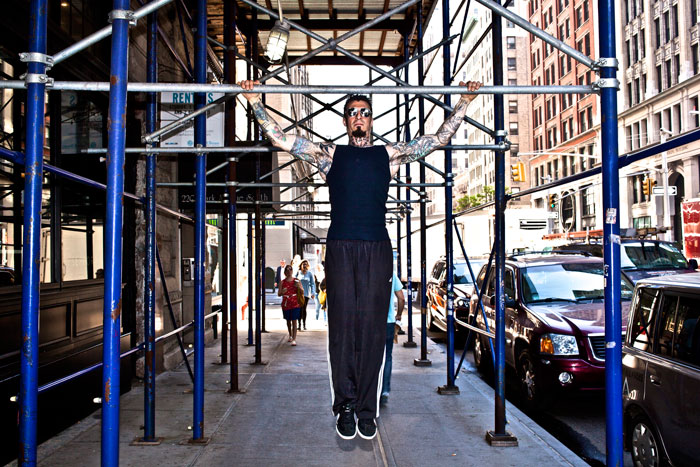
Dragon Door: Why do most women traditionally avoid pull-ups—and how do you handle that fear with those female clients?
Danny Kavadlo: That's a good question. You know there's this grand misconception that women can't do pull ups—and that's not true! Women—and men for that matter—who want to get better at pull-ups or need to do a first pull up, need to just start at the very very beginning. You have to get comfortable with the bar.
Many of these "women's" workouts are geared towards very light weights and use more yoga and Pilates-based movements. And there's nothing wrong with those whatsoever, but if you want to advance towards the pull-up then you have to start at the beginning.
I'd encourage women and men who are new to pull-ups to get comfortable grabbing the bar, and to get comfortable hanging from the bar. It's also helpful to use a spotter. If you can get to the point where you're comfortable hanging from that bar, but still can't pull yourself over it, then have somebody assist you, and gently push you so you can get to that top position. From there, you can see how long you can hang in that flexed-hang top-of-the pull-up position. Then come down as slowly as possible. Try to hold the top of the flex hang, then slowly lower yourself down until your elbow is bent at 90 degrees. Try to hold that for three seconds, then slowly come down until your elbow is bent at 120 degrees. Try to hold that for three seconds then return to the dead hang. Hold the dead hang for three seconds, then come off the bar. That technique is very very helpful because it helps you dial-in potential sticking points, or weak spots in your repetitions.
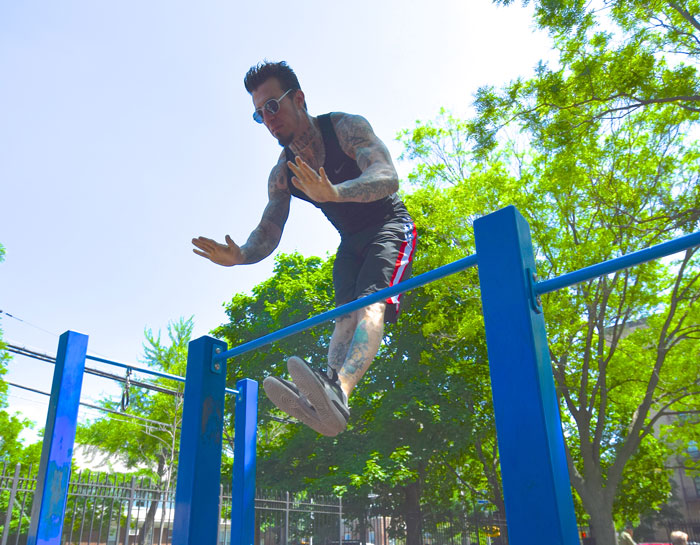
Dragon Door: Absolutely. That's very powerful! What are the three biggest advantages to training pull-ups?
Danny Kavadlo: I'd have to say that number one, pull-ups focus on real life strength. It's like before with the push and the pull—pull-ups encourage the balance and symmetry between the front and the back of the body. In terms of real-life power, you've got to literally "pull your own weight" when you do a pull-up and that's a very very powerful thing. Pull-ups also work a lot of other muscles that people don't really think about during normal strength training. In addition to the arms, biceps, and lats, pull-ups are amazing for grip strength and core strength. If you want to do a controlled pull-up you're not going to just use your back and arms, you'll be employing your abs and your glutes to remain stable and keep from swinging.
Number two, you can do a pull-up anywhere. A lot of fitness and exercise is based on a specific piece of equipment. If you want to lift weights then you need a set of weights. If you want to do a bench press, then you need a bench. With pull ups, you really don’t need any fancy equipment or a gym membership. You can just get a pipe from Home Depot, and stick it in a door frame with a couple of grommets. Then, you can do pull ups right there at home. You can do pull ups on a tree or random object. That's one of the great things about bodyweight training, and the Street Workout phenomenon in general. It encourages fitness that is not dependent on any specific esoteric piece of equipment.
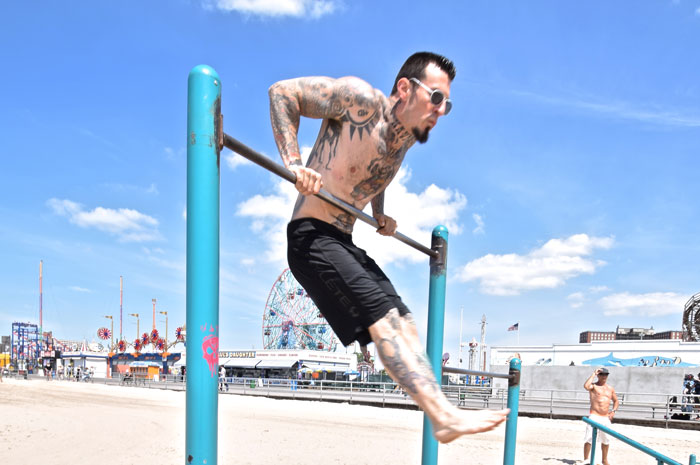
And number three is important, too. Summer is coming. If you do pull-ups, then you will look better with your shirt off! So, those are my three advantages to training pull-ups.
Dragon Door: You mentioned Street Workout, and will be discussing Street Workout during your presentation. How would you describe Street Workout and how does it relate to your own bodyweight practice?
Danny Kavadlo: There's no denying that the Street Workout movement is taking over the world. It’s getting bigger and bigger and bigger. What started out as just minimalist calisthenics crews in New York City parks has now expanded to a worldwide phenomenon. There are now organized events, competitions, and the Street Workout World Cup. This thing which started off as a low budget means to get fit has truly expanded into something greater than any of us had foreseen. As far as it plays into my own training or bodyweight training in general, is that I feel it’s a very empowering thing. As we were talking earlier, because we’re not dependent on any piece of equipment, you can do this stuff anywhere. You can work your whole body anytime, any place, and in any environment.
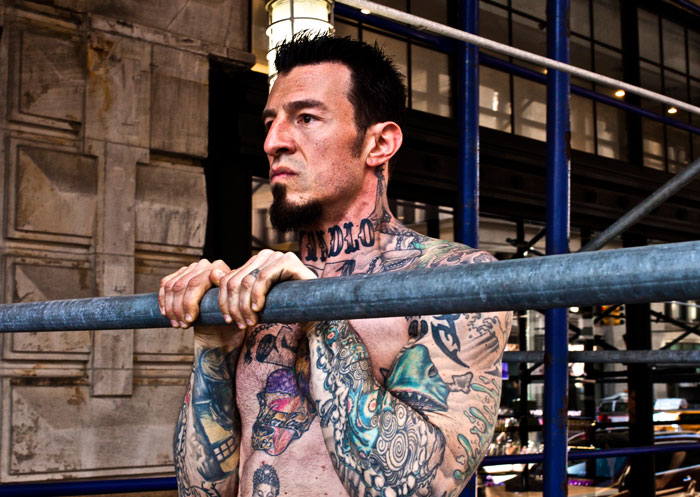
Another cool thing about Street Workout is while we focus on the physical aspect of training—getting stronger, more balanced, gaining flexibility—Street Workout also taps into the mind. If you are looking at street signs or scaffolding, you are forced to dial into your creative forces and figure out the moves that you can do. What's something I can do off of this parking meter—or that mailbox or whatever the case may be? So when you’re talking about Street Workout, you are definitely talking about strength training with the body, but you're also getting creative. You're exploring the maximum capability of what you can accomplish using just your mind, your body, and the environment around you. I feel that it’s a very pure thing and really helps us focus on what's important.
Dragon Door: Last question. The title of one of your books is Everybody Needs Training. In other words, everyone needs a coach. Who do you turn to, to refine your own game?
Danny Kavadlo: That's another great question... I try to learn from everyone around me. One of the cool things about teaching the PCC, the Progressive Calisthenics Certification, is that by the end of the weekend, people have learned from me but I always learn from the attendees, too. I really do try to learn from everyone around me, I try to be a student as much as I'm a teacher. But as far as who I turn to for refining my own game, I have the privilege of associating with a lot of great trainers. I just had dinner with Jack Arnow last night. For those of you who don't know Jack, he is one of the pioneers of modern calisthenics and the Street Workout movement. He's a 73-year old guy who can still do a one-arm-pull-up and a front lever. I can also look to Steven Hughes Landers, a Street Workout competitor who came to our PCC workshop in England. And there’s Edward Checo from Barstarzz. These guys are always inspiring me to step up my own game.
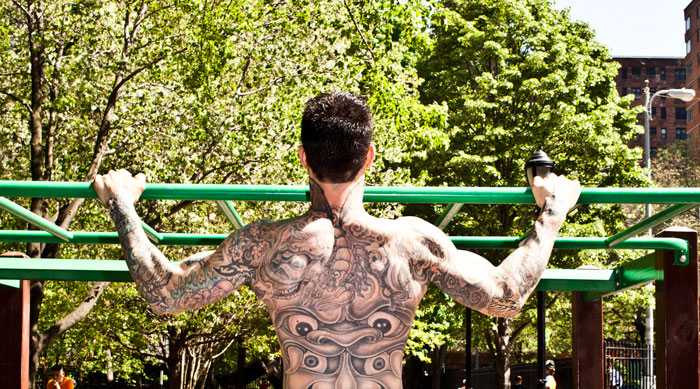
But there’s also a lot of people who inspire me to refine my own abilities who are people you've never heard of! I work out all the time in Tompkins Square Park, and there are cats over there that nobody knows—no one knows their names and no one has seen their YouTube channels, because they don't have one. They're just people who are pounding the pavement every day who are strong as hell, and who know the power of sets and reps. I see them and think, wow, I need to work on this a little more. I can ask them how they did what they’re doing, how they leaned their techniques, and how long they’ve been training. I am so lucky that there are so many people with wisdom, experience and knowledge I can look to for the inspiration to become a better version of myself. Like I say, Everybody Needs Training, even me.
Danny Kavadlo will present How to Train and Coach Your Way to Pull-Up Greatness: Plateau-Busting Tips and Strategies from a Master of the Game at this year's Health and Strength Conference in Minneapolis, Minnesota.
Prefer to register by phone? Call 1-800-899-5111.
Return to Health and Strength Conference 2016
Return to Health and Strength Conference 2016 Presenter Interviews
